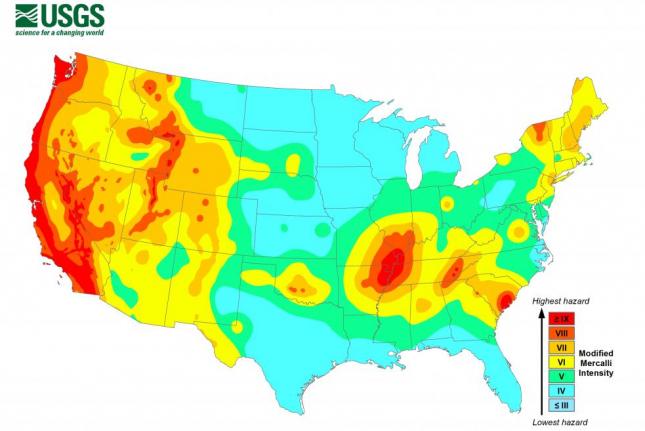WASHINGTON, Aug. 18 (Andrew V. Pestano) — The U.S. Geological Survey released a study indicating that more than 143 million people in the United States, nearly half the population, live in areas potentially prone to damaging earthquakes.
The study analyzed ground shaking triggered by the passage of seismic waves, which is responsible for most property damage during an earthquake, according to the USGS.
About 143 million people live and work in areas where there is potential for damaging shaking, which could at least damage structures. About 57 million people are in areas where the chance of shaking is moderate, and 28 million live in areas where the chance is high.
“The new exposure estimate is nearly double the previous 2006 estimate of 75 million Americans in 39 states, and is attributed to both population growth and advances in science,” William Leith, USGS senior science adviser for earthquake and geologic hazards, said in a statement.
The study did not account for earthquakes due to human activity or induced seismicity, such as from fracking.
“Populations have grown significantly in areas prone to earthquakes, and USGS scientists have improved data and methodologies that allow for more accurate estimates of earthquake hazards and ground shaking,” Leith added.
California is the most at-risk for damaging earthquakes, but the new study reveals that the eastern United States has a greater chance of damage than previously believed. South Carolina has the highest chance of a potentially dangerous earthquake in the east.
“When one considers very strong ground shaking levels, the 10 states with the highest populations exposed (in descending order) are California, Washington, Utah, Tennessee, Oregon, South Carolina, Nevada, Arkansas, Missouri and Illinois,” the USGS said in a statement. “Although this level of shaking is estimated to occur relatively infrequently, it could cause significant damage and causalities.”
The location of fault lines and the frequency of earthquakes in a region create the difference between areas at risk from moderate shaking to strong shaking, according to the USGS.







